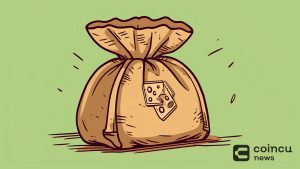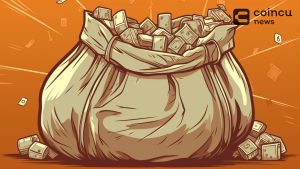The collapses of LUNA do not break the player’s hand.
Billions of dollars in capitalization blew away after the Luna crash, but many continue to pour money into it, believing that the project will revive.
From May 9, the crypto market became chaotic as Terra’s two tokens, Luna and UST, fell free, from a capitalization of more than $30 billion a week earlier to about $70 million. Players worldwide almost lost their accounts after the crash, and sharks like Changpeng Zhao, the founder of the Binance cryptocurrency exchange, or Galaxy Digital’s investment fund billionaire Michael Novogratz were blown away by hundreds of millions of dollars.

How does Luna cost the player?
Surgeon Keith Baldwin, 44, of Massachusetts (USA), told the Wall Street Journal that he had saved $177,000 in 10 years. Last year, he used his money to invest in USD Coin (crypto anchor worth in USD) with a 9% interest rate a year. He transferred all his money into UST (TerraUSD) in April with a 15% return. When the UST plunged, more than 90% of his money had “evaporated” in a few days.
Baldwin says you’re not a follower of money. He wanted to use his savings to buy a house and send his children to school, but Tera’s demise made his plans disappear. Now, this doctor has to tighten his spending to make up for the money that’s been lost. “I don’t want my children to be implicated because of my mistakes,” he said.
Meanwhile, a 47-year-old woman named Valeria in Buenos Aires (Argentina) told the Rest of the World that she earns $300 a month selling food at home. However, due to inflation and insecurity about keeping money in her system, she used her entire $1,000 in savings and $500 in loans to invest in UST. This woman believes in advertising that UST is anchored for $1:1.
Valeria carefully spends months learning about the Terra project before investing. But in May, the “disaster” caused the UST price to plummet, losing one dollar. Now, UST is only 3% of the previous value. Looking at his savings without flying, Valeria is helpless to withdraw money; all Luna and UST transactions are stopped. “I am disappointed and on the same track for investing in a stablecoin (stable amount) that drops in price,” she said.
No Lessons Learned

According to Vice President, the Luna crisis contributed to blowing up $1.6 trillion of the cryptocurrency market’s capitalization. But soon after the “pain” Terra caused, on May 28, the new Terra 2.0 protocol was adopted and officially launched. A few hours later, some exchanges started listing Luna 2.0, and the coin was sold positively. The price of tokens sometimes goes up 60 times to $30 but quickly falls to $6.
“A protocol that has just disintegrated has been revived. The market is still as turbulent as nothing has happened; billions of dollars continue to be poured into new projects,” Vice commented.
Another example showing the madness of the cryptocurrency market is the end of May. Adam Neumann, former CEO of WeWork, returned to the Flowcarbon project to overcome climate change with blockchain. Specifically, he wants to put carbon credit in the blockchain, making CO2 trading easy and possible across the country. This is just a purely economic and monetizing project because buying CO2 credits doesn’t help to reduce environmental emissions, says economics professor Robert Mendelsohn at Yale University.
Neumann has been known as the “super donkey” in the tech startup since 2019. He exaggerated his startup, helping the company be valued at $47 billion. However, after the IPO record was released, WeWork’s disastrous business results showed no basis for the company to achieve such a massive valuation.
Despite the founder’s scandal and the nonsense of the project, Flowcarbon received a $70 million grant from an affiliate of A16z, a venture capital firm known in the crypto world.
Economist Paul Krugman says big investors like a16z and private users don’t seem to have anywhere to go. Many people look to cryptocurrencies as an investment channel, similar to real estate before, no matter how risky they are.
According to Vice, cryptocurrencies are being viewed as a commodity, not as much as security or post-crisis sustainability. Those who lost their whiteness as they entered the digital money market more and more, but the projects that had just collapsed continued to be spectacularly revived. In the spiral of the money market, consumers are constantly calling for a “catch to the bottom,” but no one knows where the absolute bottom is. “After the market’s turmoil, no clear lesson has been learned; no one has learned anything after the crashes,” the page said.
DISCLAIMER: The Information on this website is provided as general market commentary and does not constitute investment advice. We encourage you to do your own research before investing.
Join CoinCu Telegram to keep track of news: https://t.me/coincunews
Follow CoinCu Youtube Channel | Follow CoinCu Facebook page
CoinCu News
KAI



















